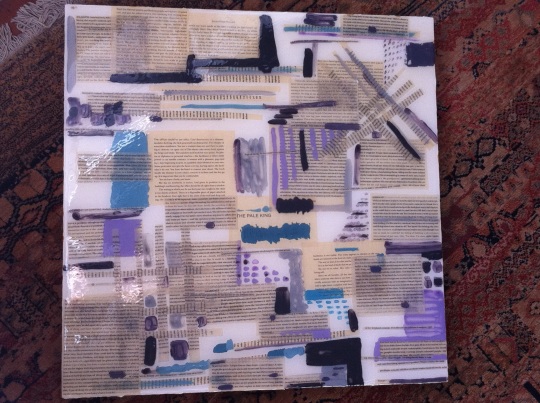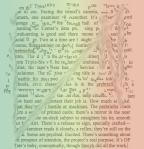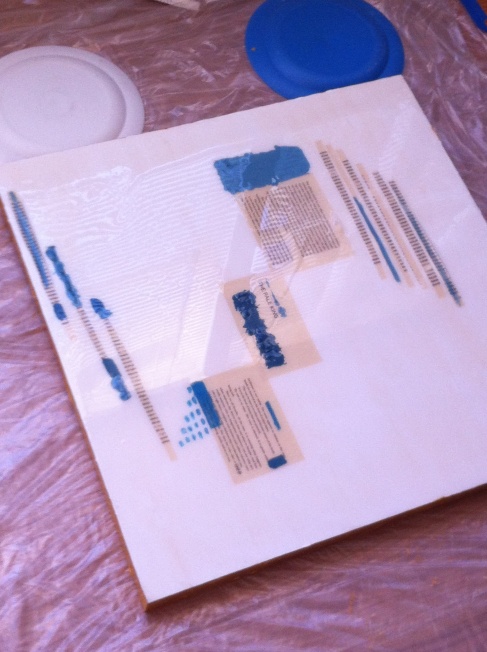Sorry about my title. I’ve been playing with Excel a lot this week, most significantly because my Text Art aspirations hit some major walls in terms of time and knowledge constraints. However, amazingly, my Excel products are not only USEFUL, but seem to be as visually EXCITING (okay, ALMOST) as the text art I was imagining I might create. And it was all an accident. The only lingering frustration is that the final product of my Excel work this week is going to be difficult to share online. I will talk about it now, show my exciting product at the research slam on Friday, and work on figuring out ways to add it to this sight in something other than screen shot form. Let me tell you about my process.
If you are a good reader of the blog, you already know that I initiated my exploration of Excel because it seems like the “useful” tool par excellence, and I envisioned being able to do interesting things with spreadsheets because I’ve used them before in very different contexts, like real jobs and such. However, any potential interesting experiments or visualizations had to wait for me to copy and paste the chapter of The Pale King, sentence by sentence, into a spreadsheet. I found the slow, meticulous, brainless work very enjoyable and it proved to be a much needed break from my extreme workload that should abate by the end of this week. Fast forward some hours, and the Excel sheet was ready to go. And then, I pushed the dollar sign button, because it was the first button that amused me, and immediately broke my spreadsheet. I have since learned that it is in fact possible to recover a spreadsheet even if it has not been saved, but I didn’t know this last week. So, copy and paste and repeat. This next time, after maniacally saving the spreadsheet three or seven times, I began to push other buttons on the top panel of the program. As most spreadsheets contain data that is numerical, using the same functions on a text spreadsheet either transformed most of the text into illegible symbols, or deleted large parts of what I had entered in the rows. That said, I tried out all of the functions, tried unsuccessfully to have Excel create any graphs for me, and then stopped.
I have to admit here that I came into the Excel experiment with some theories, and a certain motivation as well. I admit this because what I have described up to this point was play. Fun play, certainly, but I wanted to move toward an idea suggested to me by Claire earlier this quarter. Because The Pale King is an unfinished work, whose organization into what was published was implemented by an editor, I was initially very interested in making a larger network visualization of the different components of the text and proposing other forms of organization. That said, for the purpose of the current project, I felt compelled to limit myself to one chapter of the novel, and it turned out to be a chapter that encourages a similar investigation of order and organization. Within this chapter, there are transcriptions of a number of unnamed characters being interviewed by the IRS, in which each character is identified only by social security number. I decided that looking at the lengths of the sentences might be a way to examine the differences in speech pattern in the separate interviews. The first spreadsheet of the text, organized in chronological order (taken directly from the novel) already demonstrates speech patterns within the interviews and makes the different characters more visually distinguishable than they are within the text. The first deformance of the text I performed was to rearrange the text alphabetically. This was not difficult, since there are buttons in Excel that alphabetize automatically. More interesting visually and technically was the next experiment. I wanted to organize the spreadsheet according to how many characters were in each line, which meant searching the internet for formulas to throw into the graph. I assume this part would have taken anyone truly proficient in Excel less than five minutes. I won’t tell you how long it took me to write a correct formula, but it was longer than five minutes. The searching was worth it, however, when the spreadsheet was transformed into a shape that was very exciting on a large screen. I headed to a print shop (two, actually) to create tangible visualizations of these spreadsheets. With these printouts, I’ve created visuals for Friday’s slam, and I will do my best to figure out a way to share them with you as well. This may be material for another post, but what I am most interested in doing with these visuals at the slam is raising questions like:
-Can these visualizations stand alone? Do they always need a narrative to explain them to others?
-Aside from the speech pattern visualization described above, how else are these visuals interesting, helpful, attractive?
-How do these visualizations interact with our questions about usefulness, and beauty? (I find these visuals to be very exciting to look at, I could see blowing them up and putting them on a wall, even!)
In any event, my next move is to figure out Photoshop. Ha! We will see if it can help me advance with my word art plans.























